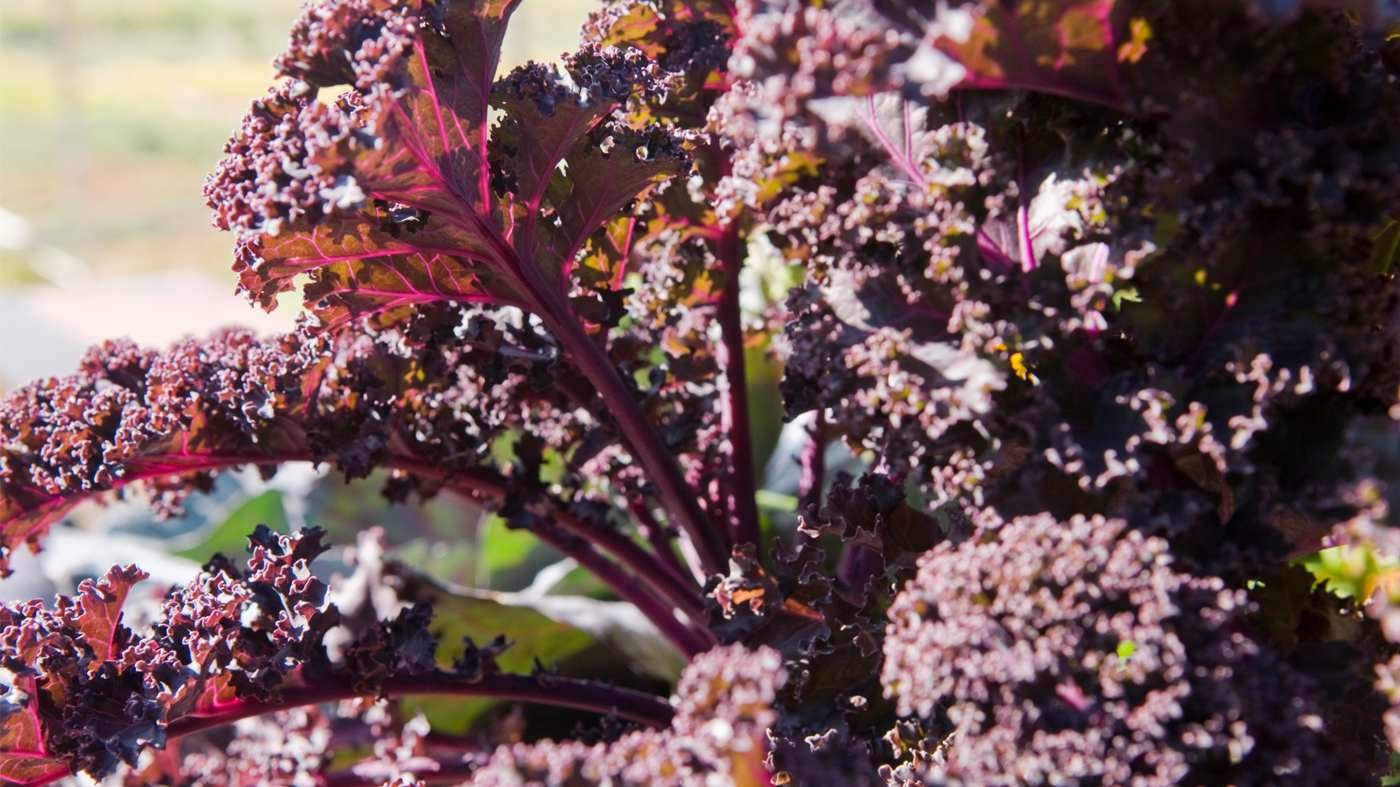Brassica oleraceae ‘Redbor’

It’s official, sunshine lovers!
While October in the Chicago area is usually one of the most pleasant seasons of the year, in recent years, bright sunshiny days, and warm weather has prevailed and with some exceptions, “in the outlying areas,” frost held off. The results? Beautiful fall color and flowering in perennials, grasses, and those intriguing late-season vegetables masquerading as ornamentals.
A Study in contrasts
How could you miss the statuesque Redbor kale plants (Brassica oleraceae ‘Redbor’) dominating containers, urban median gardens, mixed borders, and of course, standing proud and tall in their original, more natural home—the vegetable garden? This purple-burgundy plant is a designer’s dream because the dark colors contrast brilliantly with any and all of spring’s pastels (pink, lavender, baby blue, butter yellow, and lime green) as well as summer’s tropical heat (orange, magenta, cerise, true blue, and deep purple).
Form and foliage
Unlike other forms of kale, ‘Redbor’ grows upright on strong stems. The seed packet may say the plant grows to two feet, but the plants in the Garden’s Crescent towered considerably higher—four feet is not unusual. The tightly curled foliage offers a texture not found in annual or perennial aisles and the leaves will continue to develop throughout summer and well through autumn, when they transition from dark purple to a bright burgundy (some gardeners claim the color is more like magenta, but that could be a bit of a stretch). The cause of this change is frost and prolonged cool weather, which not only push growth and a red color, but give the plant a sweeter flavor, and the gardener a big surprise.
To eat or not to eat
Those who value kale as a crop rather than a decoration can sow seeds of ‘Redbor’ in early spring as long as the soil is not pure muck. Choose a well-drained, full-sun spot and thin the plants as they grow, allowing for the full-body structure they are going to assume. An alternative would be to buy transplants and pop them in wherever you want them. Leaves from transplants can be harvested after 55 days whereas seed-grown plants need to wait for 75 days or more. Collect the outer leaves first and allow the inner leaves to continue to grow as the rest of the plant will, too. Farmers will also tell you to cut off the tops of the plants as another form of harvest.
Looks good and is good for you
Kale is a member of the mustard family (Brassicaceae), along with many of the vegetables we didn’t care for as children, e.g., broccoli, Brussels sprouts, cabbage, and cauliflower. But we are not children any more, and this group of plants should be part of our go-to medicine cabinet. Kale contains an impressive list of vitamins and minerals (vitamin A, C, K, manganese, fiber, calcium, iron and potassium), as well as the phyto-chemicals that provide a wide range of health benefits, from lowering cholesterol to fighting cancer. It also contains the highest anti-oxidant properties of any fruit or vegetable. It’s time to start cooking!
Lee Randhava is a horticultural writer who lives and gardens in Evanston, Illinois.

